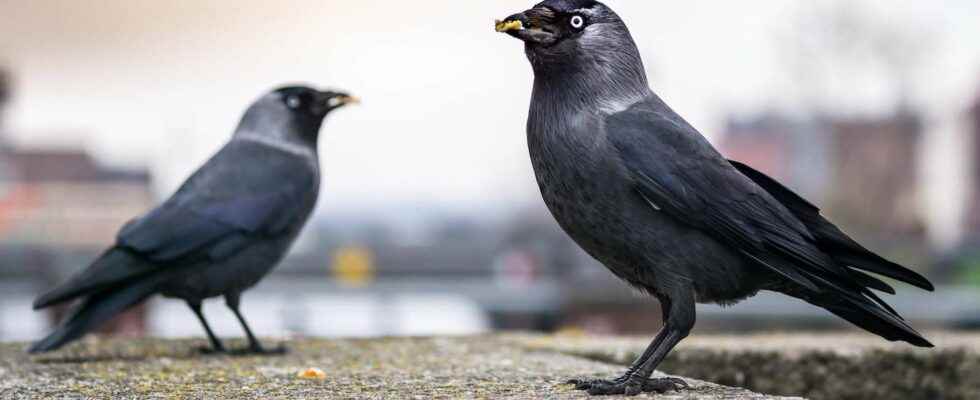“Beasts of science” is like a collection of stories. Beautiful stories that tell the living in all its freshness. But also in all its complexity. A parenthesis to marvel at the treasures of the world. For this new episode, let’s take a look once again at this bird that feeds many fantasies: the jackdaw.
You will also be interested
[EN VIDÉO] Crows as smart as great apes They have much smaller brains and yet crows turn out to be as intelligent as great apes. Numerous studies confirm this. These amazing birds show adaptability, personality. Something to question the very processes of the evolution of cognitive abilities. How can brains as different as a crow’s and a great ape’s be brought together at some point? This is the question posed by researchers at the University of Lund (Sweden) (in English) © University of Lund
The jackdaw. It is one of many members of the large corvid family. A crow, in short. But a rather peculiar crow. By his look first. And his amazing blue eyes light. By his social behavior, then. The jackdaw is indeed monogamous. Faithful throughout his life. Fifteen years, on average. And the pairs formed live in bands. In colonies that can group up to a hundred individuals.
Colonies that seem to have adopted a certain form…of birdcracy! Based on processes of decision making that overcome individual differences. To reach some kind of consensus “democratic”. It’s not really new. Remember, in the very first episode of beasts of science, we had discovered how the lycaon expresses its voice while sneezing. Other groups of animals do. In their own way. But generally, within groups rather restricted in number. Or even family-only groups.
Among the jackdaws, “birdcracy” is practiced within large groups. Composed of animals of different ages, sexes, families and even colonies. As long as all of these individuals remain within screaming range. Researchers observed it when they woke up. At sunrise Sunin winter, when theair is still cold and the environment dark. Groups of hundreds of jackdaws coordinate to take flight all at once. Despite their differences. Probably because staying in a group has advantages. To many, the risk of predation is divided. And the chances of finding food are multiplied.
Cries for the starting signal
Jackdaws live all over Europe — North Africa and Asia too — but it is in the UK that researchers have witnessed the democratic merry-go-round that hides behind the apparent cacophony emitted by these funny crows. During long winter months, they not only observed them attentively, but also listened to them. And that’s how they noted that if sometimes the jackdaws take off from their “night hideout” in small groups separated by about twenty minutes, most of the time, they leave in mass. With up to 1,500 birds taking flight about 4 seconds apart.
What gives the start a bit are the cries of the jackdaws. Cries that intensify in the hour before take-off. But who can calm down if the rain gets involved and delays the take-off of the group. As if these calls provided large groups of jackdaws with a means to reach a consensus to make cohesive, collective departures from their perches. A consensus is reached when the intensity of the cries crosses a certain threshold.
When the group cannot come to an agreement, when the intensity of the cries does not reach the critical level, the flight ends up being more disorderly. The jackdaws then take off in dribs and drabs. Presumably following the collective decision of the colony to which they belong. One more proof that the crow is… not so stupid!
And perhaps also a sign that we should beware of the noise pollution to which we expose nature in general and animals in particular. It may well affect their ability to communicate and make consensual decisions important to their survival.
Interested in what you just read?
